New Thermo-Reflective Coatings for Applications as a Layer of Heat Insulating Materials
Abstract
:1. Introduction
2. Materials and Methods
2.1. Characteristic of Raw Materials
2.2. Coatings Preparation Method
2.3. Measurement Methods
2.3.1. Methods of Measuring Thermal Properties of Coatings
2.3.2. Methods of Measuring of Thermal Transmittance
2.3.3. Methods of Measuring Physical and Mechanical Properties of Coatings
2.3.4. Analysis of the Chemical Structure of the Coating
3. Results and Discussion
3.1. Chemical Structure Analysis Results
3.2. Thermal Properties Analysis Result
3.3. Thermal Transmittance Analysis Results
3.4. Restults of Pysical and Mechanical Propeties Analysis
4. Conclusions
Author Contributions
Funding
Institutional Review Board Statement
Informed Consent Statement
Data Availability Statement
Acknowledgments
Conflicts of Interest
References
- Pisello, A.L. State of the art on the development of cool coatings for buildings and cities. Sol. Energy 2017, 144, 660–680. [Google Scholar] [CrossRef]
- Zhang, W.; Song, Z.; Shi, Y.; Song, J.; Qu, J.; Qin, J.; Zhang, T.; Li, Y.; Ji, W.; Xu, L.; et al. The effects of manufacturing processes and artificial accelerated weathering on the solar reflectance and cooling effect of cool roof coatings. Sol. Energy Mater. Sol. Cells 2013, 118, 61–71. [Google Scholar] [CrossRef]
- Revel, G.M.; Martarelli, M.; Emiliani, M.; Celotti, L.; Nadalini, R.; De Ferrari, A.; Hermanns, S.; Beckers, E. Cool products for building envelope—Part II: Experimental and numerical evaluation of thermal performances. Sol. Energy 2014, 105, 780–791. [Google Scholar] [CrossRef]
- Wang, Z.H. Reconceptualizing urban heat island: Beyond the urban-rural dichotomy. Sustain. Cities Soc. 2022, 77, 103581. [Google Scholar] [CrossRef]
- Pockett, J.; Belusko, M. A Review of Heat-reflective Paints. In Proceedings of the Solar 2010, the 48th AuSES Annual Conference, Canberra, Australia, 1–3 December 2010. [Google Scholar]
- Bozonnet, E.; Doya, M.; Allard, F. Cool roofs impact on building thermal response: A French case study. Energy Build. 2011, 43, 3006–3012. [Google Scholar] [CrossRef]
- Gao, Q.; Wu, X.; Ma, Y.; Li, D.; Fan, Y.; Du, C. Effect of Sn4+ doping on the photoactivity inhibition and near infrared reflectance property of mica-titania pigments for a solar reflective coating. Ceram. Int. 2016, 42, 17148–17153. [Google Scholar] [CrossRef]
- Rossi, F.; Castellani, B.; Presciutti, A.; Morini, E.; Filipponi, M.; Nicolini, A.; Santamouris, M. Retroreflective façades for urban heat island mitigation: Experimental investigation and energy evaluations. Appl. Energy 2015, 145, 8–20. [Google Scholar] [CrossRef]
- Han, Y.; Taylor, J.E.; Pisello, A.L. Toward mitigating urban heat island effects: Investigating the thermal-energy impact of bio-inspired retro-reflective building envelopes in dense urban settings. Energy Build. 2015, 102, 380–389. [Google Scholar] [CrossRef]
- Ferrari, C.; Muscio, A.; Siligardi, C.; Manfredini, T. Design of a cool color glaze for solar reflective tile application. Ceram. Int. 2015, 41, 11106–11116. [Google Scholar] [CrossRef]
- Zinzi, M.; Carnielo, E.; Agnoli, S. Characterization and assessment of cool coloured solar protection devices for Mediterranean residential buildings application. Energy Build. 2012, 50, 111–119. [Google Scholar] [CrossRef]
- Santamouris, M.; Synnefa, A.; Karlessi, T. Using advanced cool materials in the urban built environment to mitigate heat islands and improve thermal comfort conditions. Sol. Energy 2011, 85, 3085–3102. [Google Scholar] [CrossRef]
- Joudi, A.; Svedung, H.; Cehlin, M.; Rönnelid, M. Reflective coatings for interior and exterior of buildings and improving thermal performance. Appl. Energy 2013, 103, 562–570. [Google Scholar] [CrossRef]
- Hernández-Pérez, I.; Xamán, J.; Macías-Melo, E.V.; Aguilar-Castro, K.M.; Zavala-Guillén, I.; Hernández-López, I.; Simá, E. Experimental thermal evaluation of building roofs with conventional and reflective coatings. Energy Build. 2018, 158, 569–579. [Google Scholar] [CrossRef]
- Cao, X.; Tang, B.; Zou, X.; He, L. Analysis on the cooling effect of a heat-reflective coating for asphalt pavement. Road Mater. Pavement Des. 2015, 16, 716–726. [Google Scholar] [CrossRef]
- Bao, Y.; Kang, Q.L.; Ma, J.Z. Structural regulation of hollow spherical TiO2 by varying titanium source amount and their thermal insulation property. Colloids Surf. A Physicochem. Eng. Asp. 2018, 537, 69–75. [Google Scholar] [CrossRef]
- Wang, F.; Liang, J.; Tang, Q.; Wang, N.; Li, L. Preparation and properties of thermal insulation latex paint for exterior wall based on defibred sepiolite and hollow glass microspheres. Adv. Mater. Res. 2009, 58, 103–108. [Google Scholar] [CrossRef]
- Yi, Y.; Jiang, Y.; Fan, J.; Zhang, Y.; Deng, C.; Tian, T.; Ji, X. Durability of a heat-reflective coating on an asphalt pavement. Road Mater. Pavement Des. 2021. [Google Scholar] [CrossRef]
- Zeng, G.; Yang, J.; Hong, R.; Li, Z.; Chen, Y.; Li, F.; Wu, Q.; Liu, L.; Jiang, X. Preparation and thermal reflectivity of nickel antimony titanium yellow rutile coated hollow glass microspheres composite pigment. Ceram. Int. 2018, 44, 8788–8794. [Google Scholar] [CrossRef]
- Synnefa, A.; Santamouris, M.; Akbari, H. Estimating the effect of using cool coatings on energy loads and thermal comfort in residential buildings in various climatic conditions. Energy Build. 2007, 39, 1167–1174. [Google Scholar] [CrossRef]
- Synnefa, A.; Santamouris, M.; Livada, I. A study of the thermal performance of reflective coatings for the urban environment. Sol. Energy 2006, 80, 968–981. [Google Scholar] [CrossRef]
- Zheng, M.; Tian, Y.; He, L. Analysis on environmental thermal effect of functionally graded nanocomposite heat reflective coatings for asphalt pavement. Coatings 2019, 9, 178. [Google Scholar] [CrossRef]
- Zhang, Y.; Zhang, Y.; Shi, W.; Shang, R.; Cheng, R.; Wang, X. A new approach, based on the inverse problem and variation method, for solving building energy and environment problems: Preliminary study and illustrative examples. Build. Environ. 2015, 91, 204–218. [Google Scholar] [CrossRef]
- Kousis, I.; Fabiani, C.; Pisello, A.L. Could a bio-resin and transparent pavement improve the urban environment? An in field thermo-optical investigation and life-cycle assessment. Sustain. Cities Soc. 2022, 79, 103597. [Google Scholar] [CrossRef]
- Zhang, Y.; Tan, X.; Qi, G.; Yang, X.; Hu, D.; Fyffe, P.; Chen, X. Effective radiative cooling with ZrO2/PDMS reflective coating. Sol. Energy Mater. Sol. Cells 2021, 229, 111129. [Google Scholar] [CrossRef]
- Kirpluks, M.; Kalnbunde, D.; Benes, H.; Cabulis, U. Natural oil based highly functional polyols as feedstock for rigid polyurethane foam thermal insulation. Ind. Crops Prod. 2018, 122, 627–636. [Google Scholar] [CrossRef]
- He, H.; Wang, T.; Zhu, S. Continuous production of biodiesel fuel from vegetable oil using supercritical methanol process. Fuel 2007, 86, 442–447. [Google Scholar] [CrossRef]
- Barbero, S.; Dutto, M.; Ferrua, C.; Pereno, A. Analysis on existent thermal insulating plasters towards innovative applications: Evaluation methodology for a real cost-performance comparison. Energy Build. 2014, 77, 40–47. [Google Scholar] [CrossRef]
- Long, J.; Jiang, C.; Zhu, J.; Song, Q.; Hu, J. Controlled TiO2 coating on hollow glass microspheres and their reflective thermal insulation properties. Particuology 2020, 49, 33–39. [Google Scholar] [CrossRef]
- Zhang, Z.; Wang, K.; Mo, B.; Li, X.; Cui, X. Preparation and characterization of a reflective and heat insulative coating based on geopolymers. Energy Build. 2015, 87, 220–225. [Google Scholar] [CrossRef]

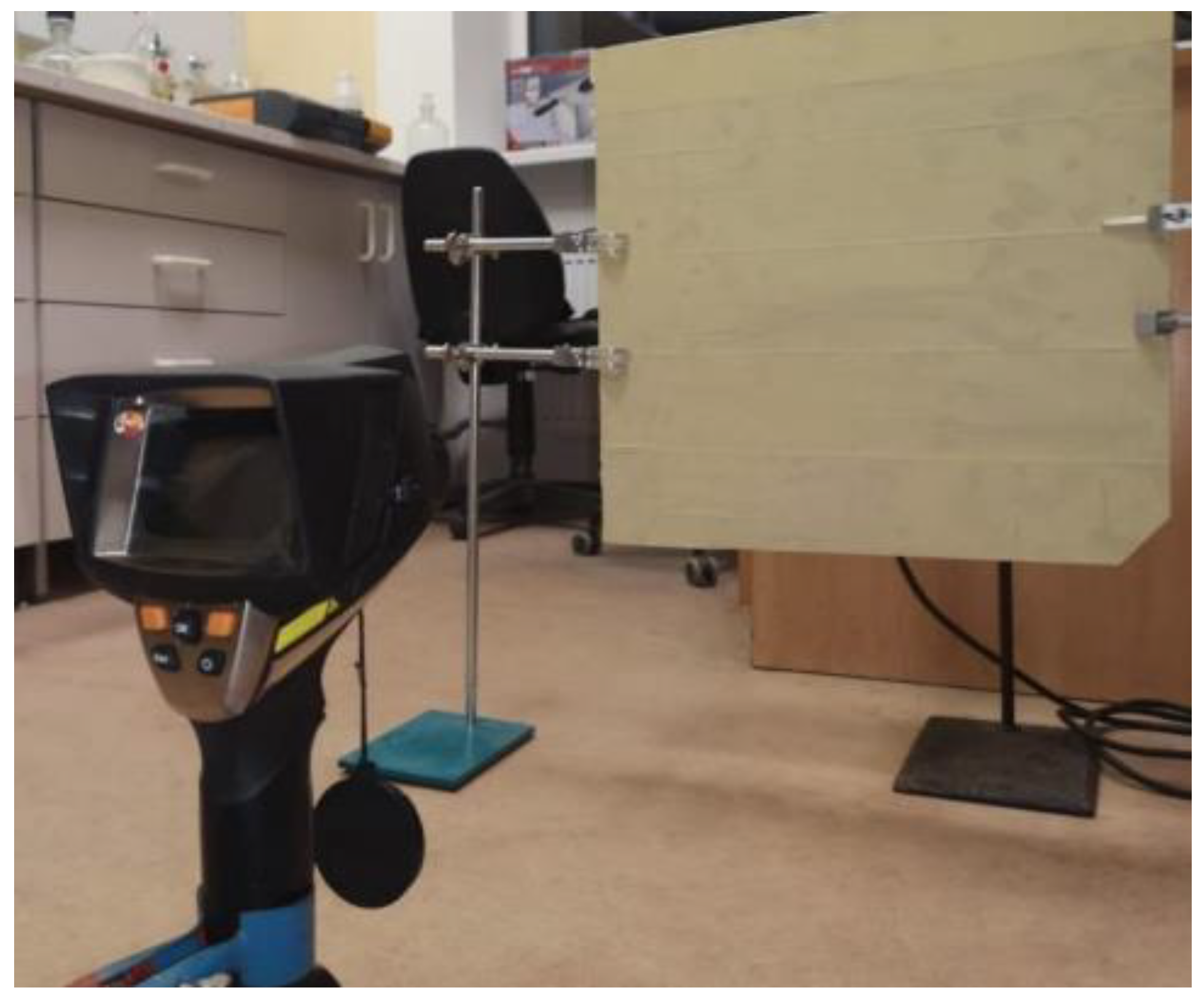
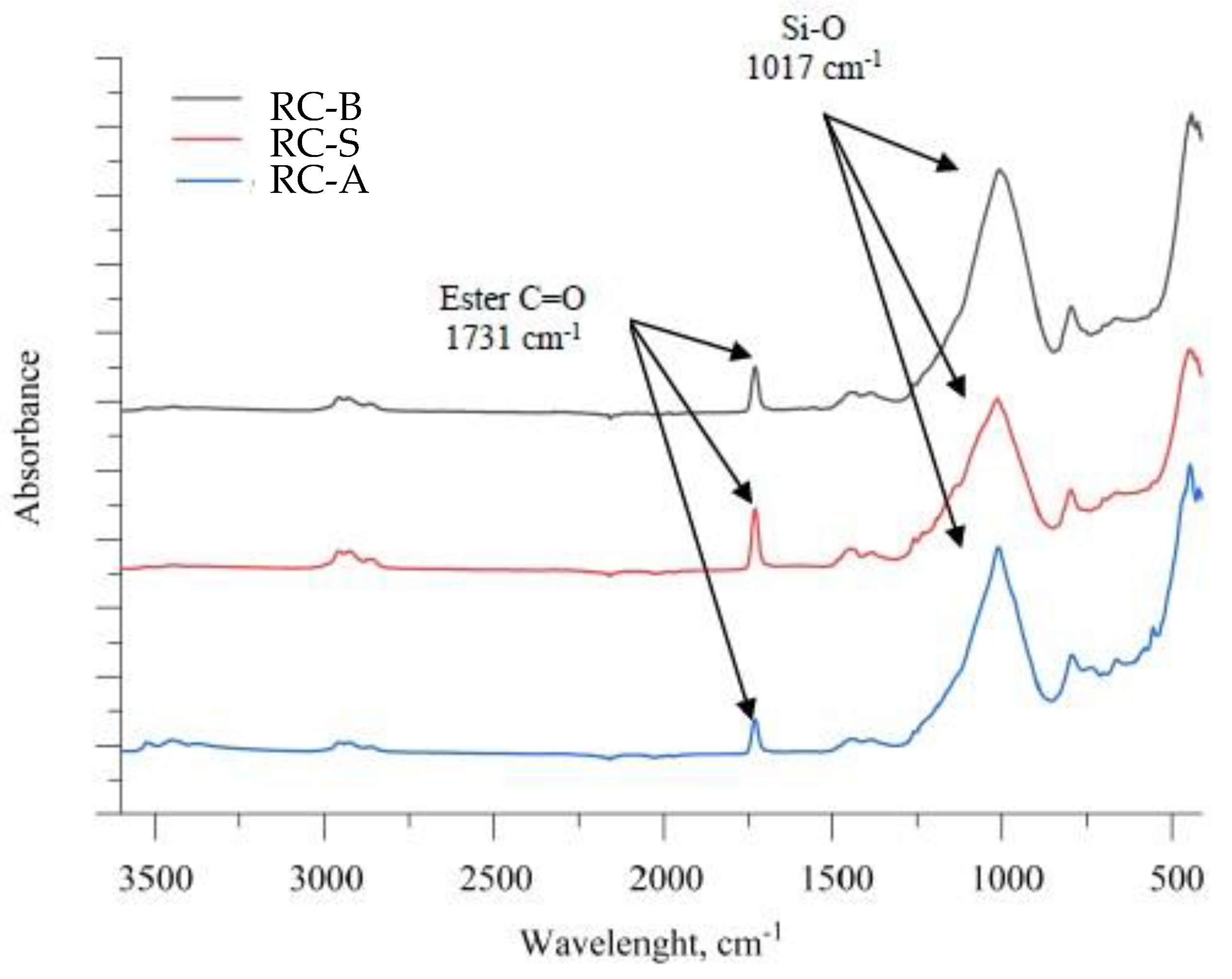


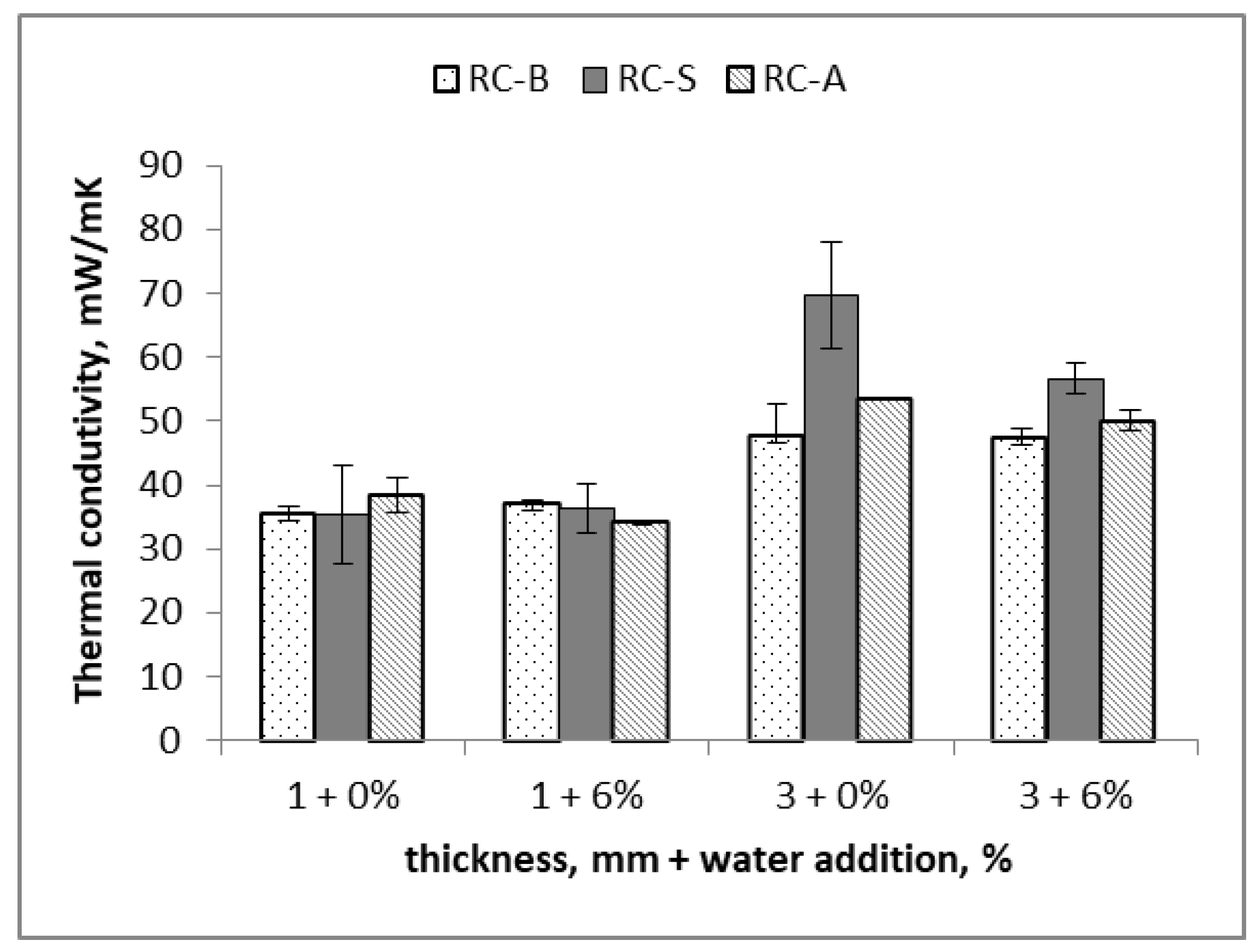

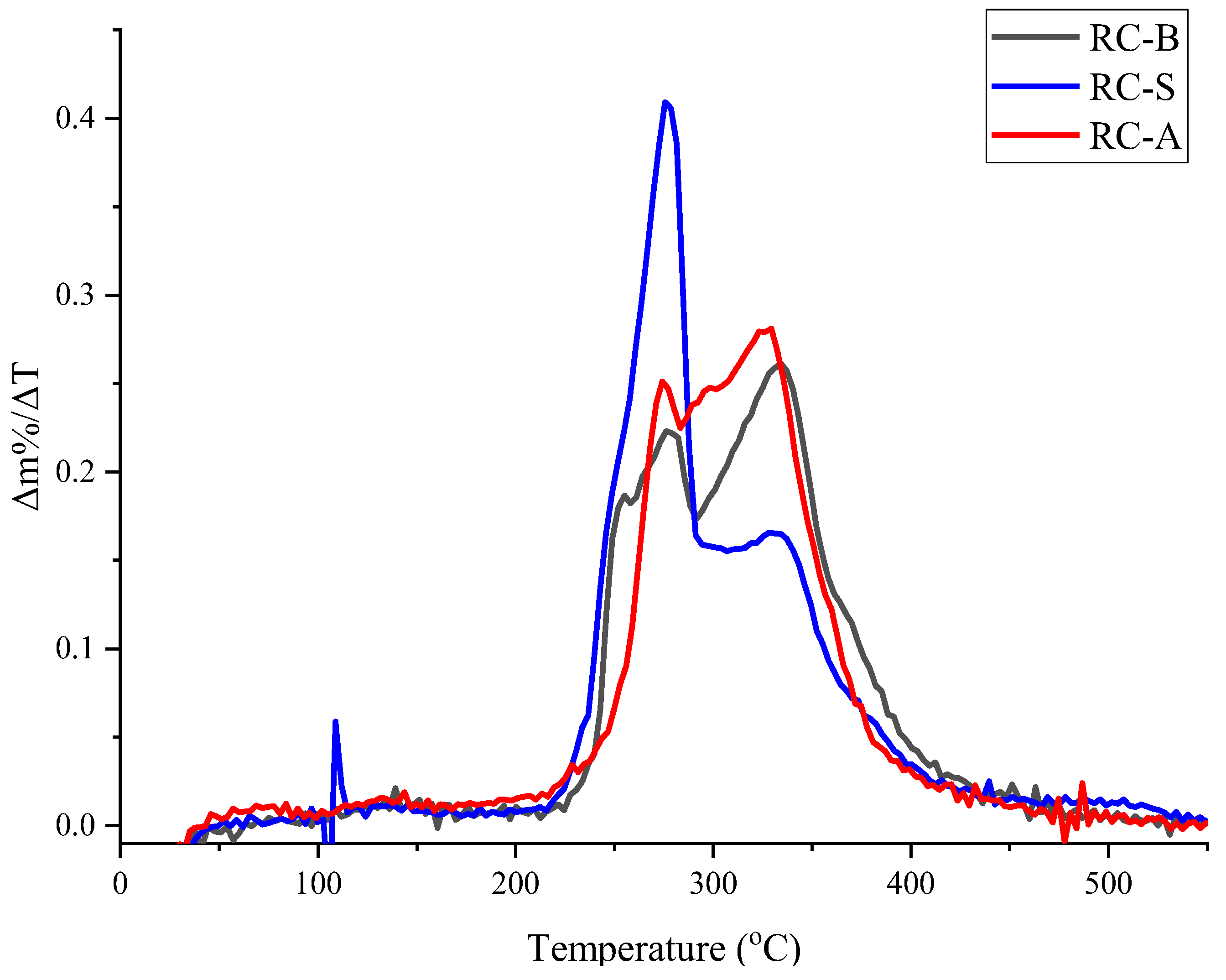

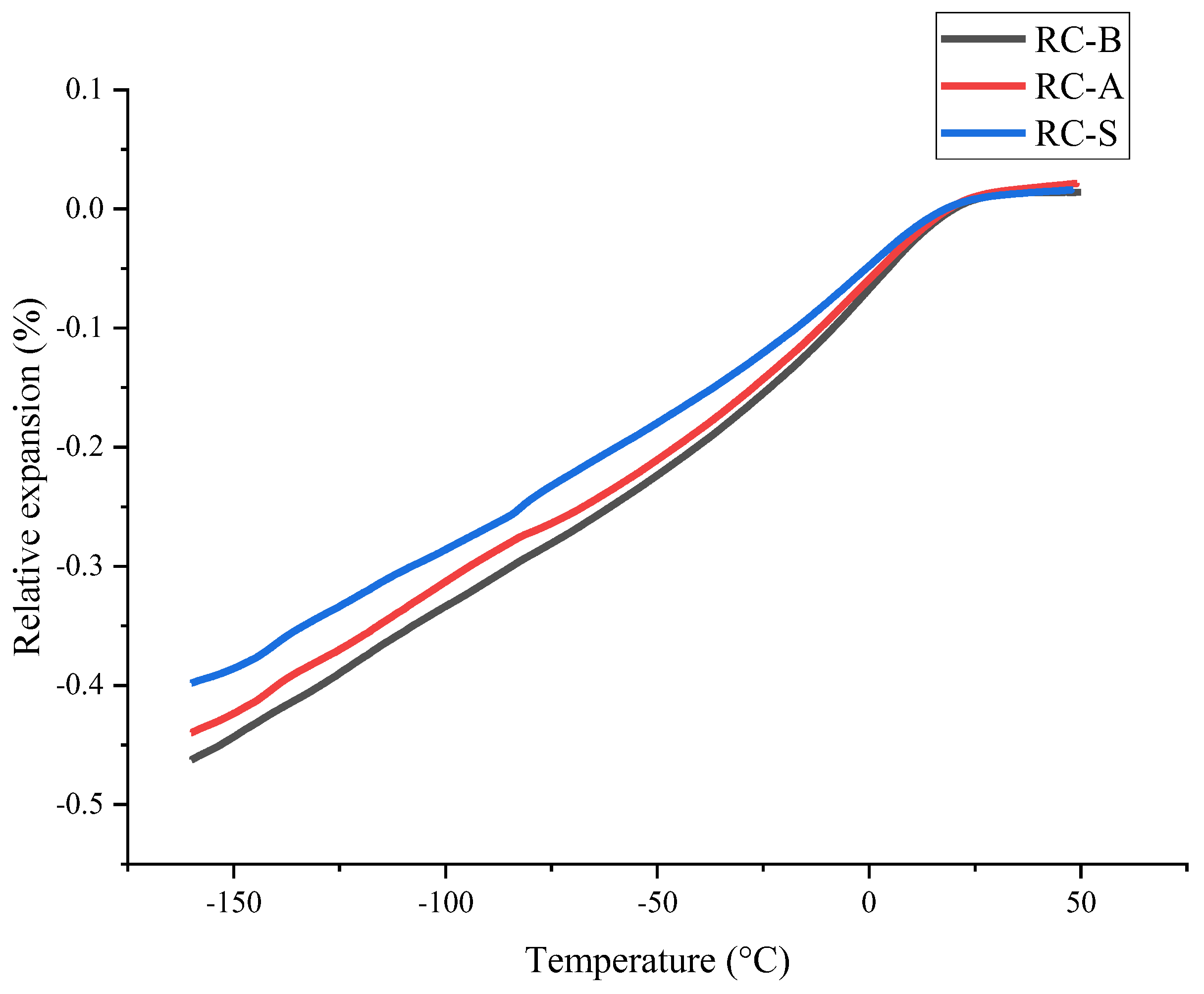

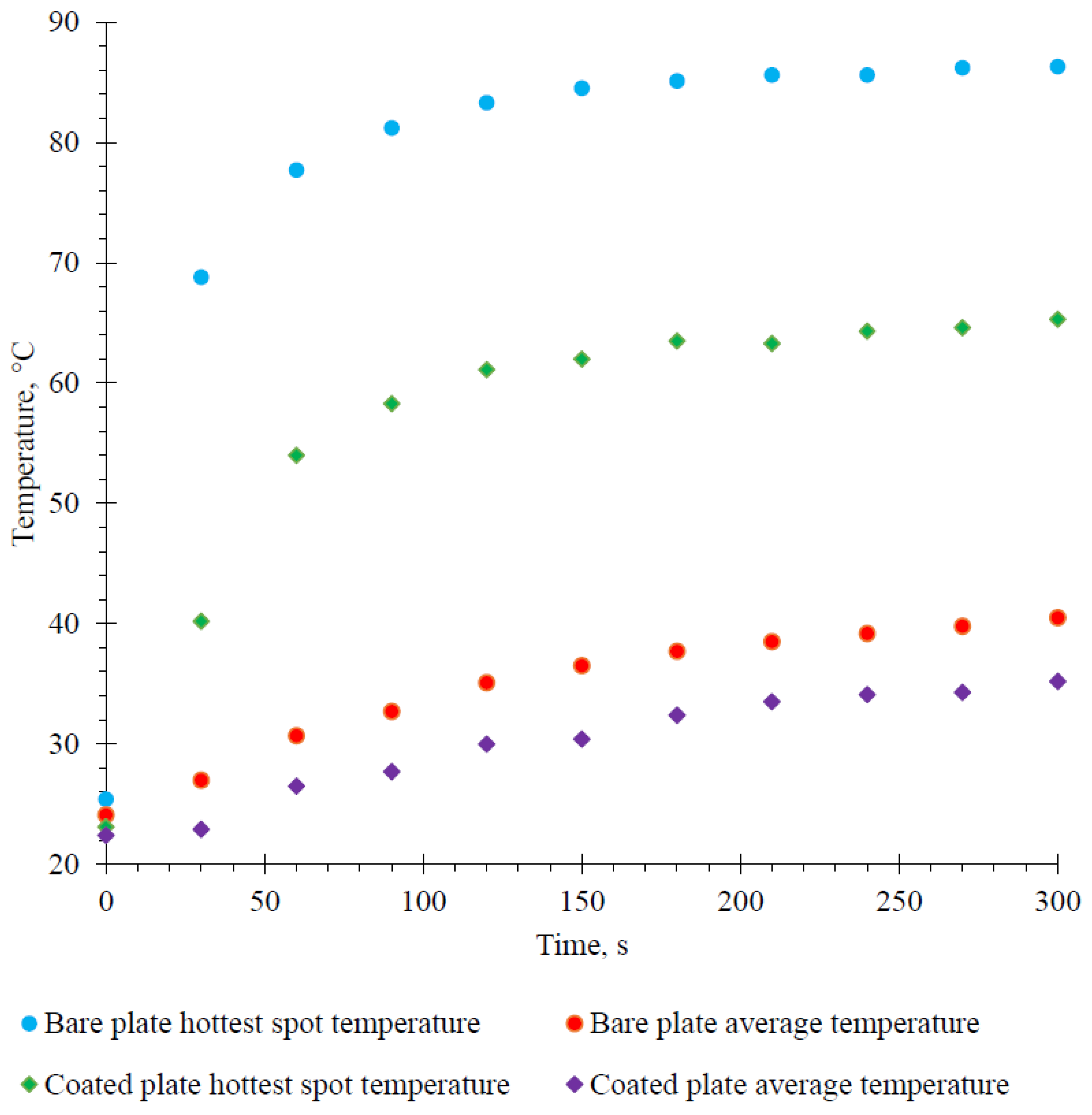


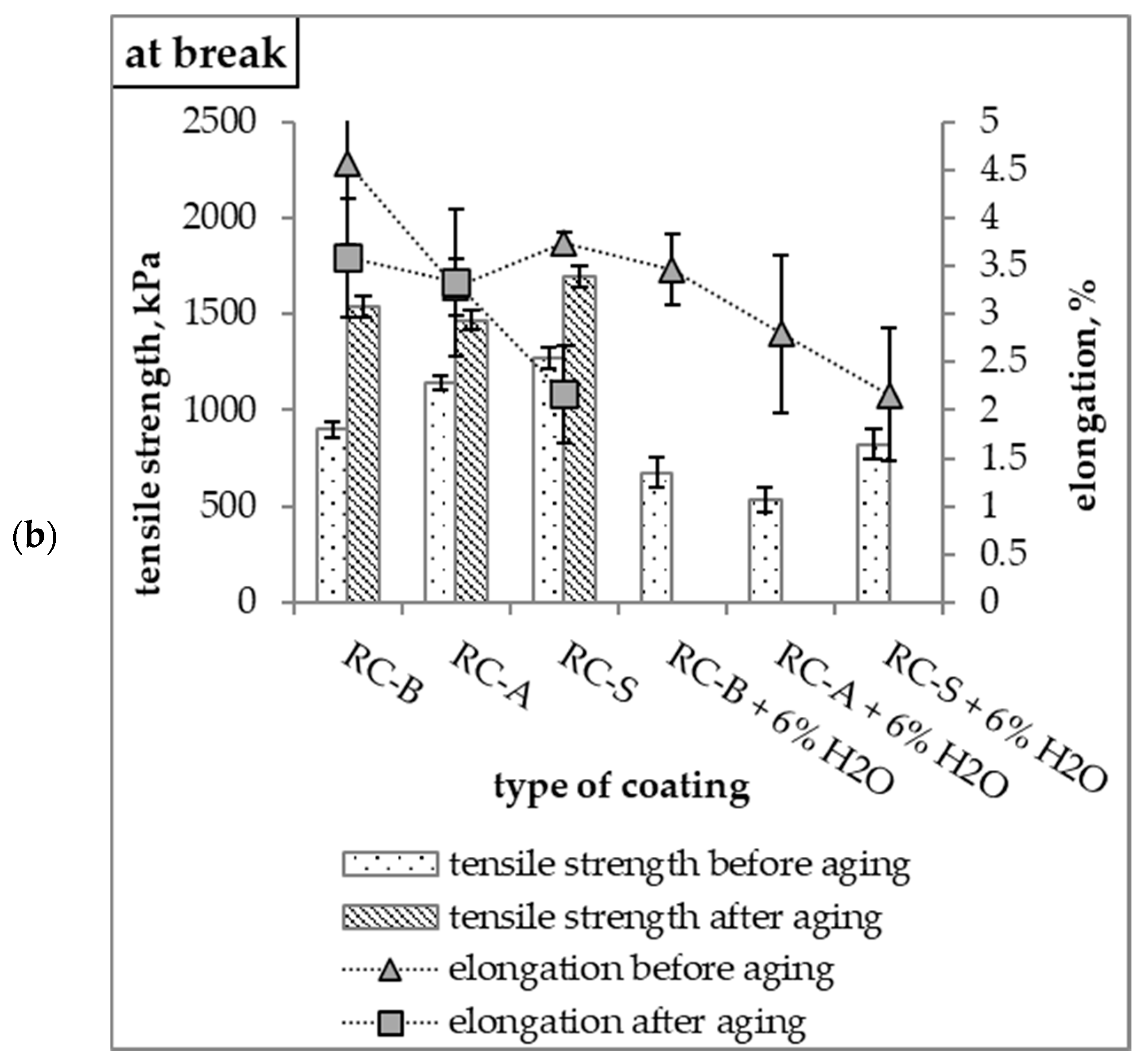



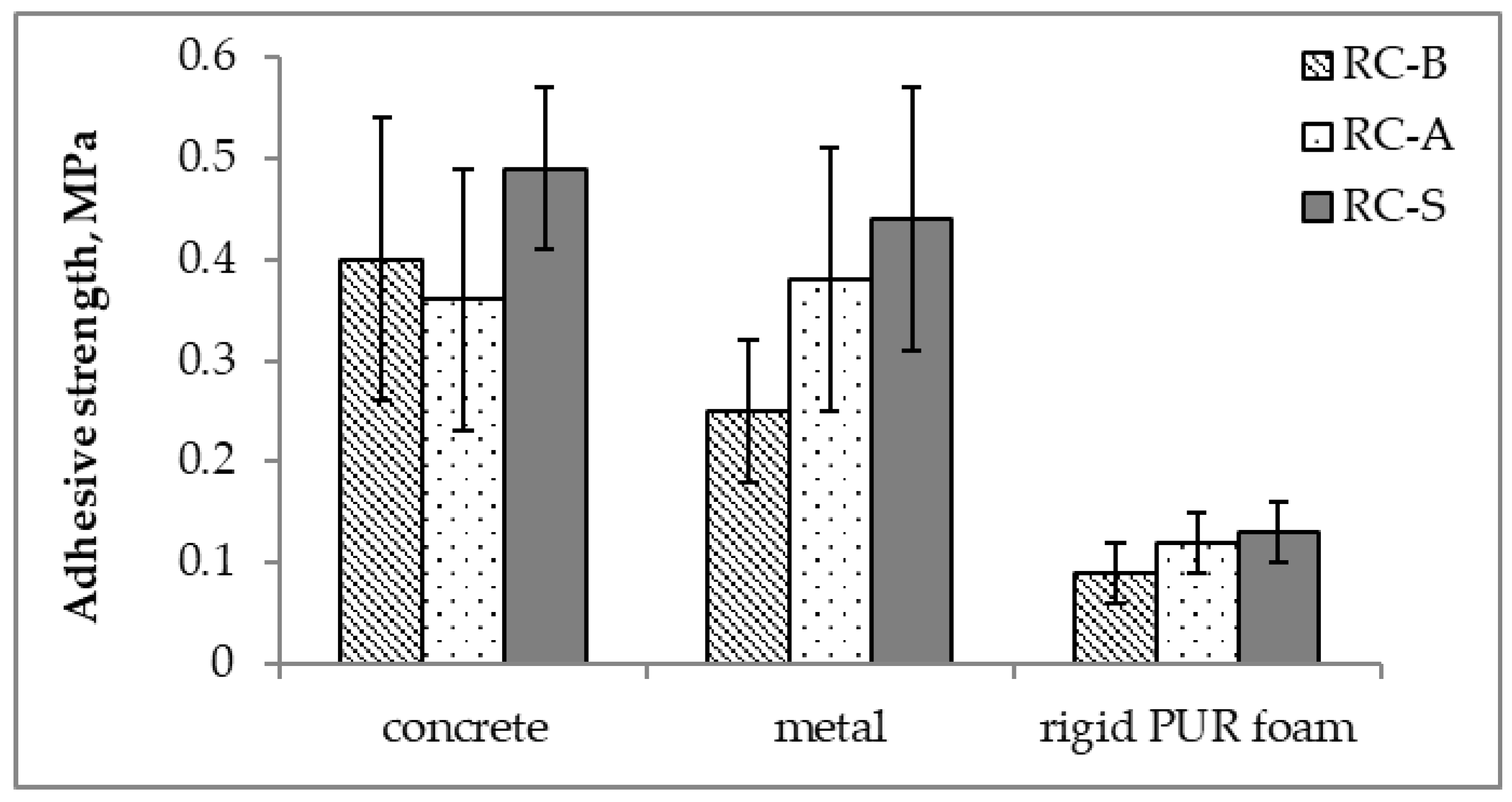

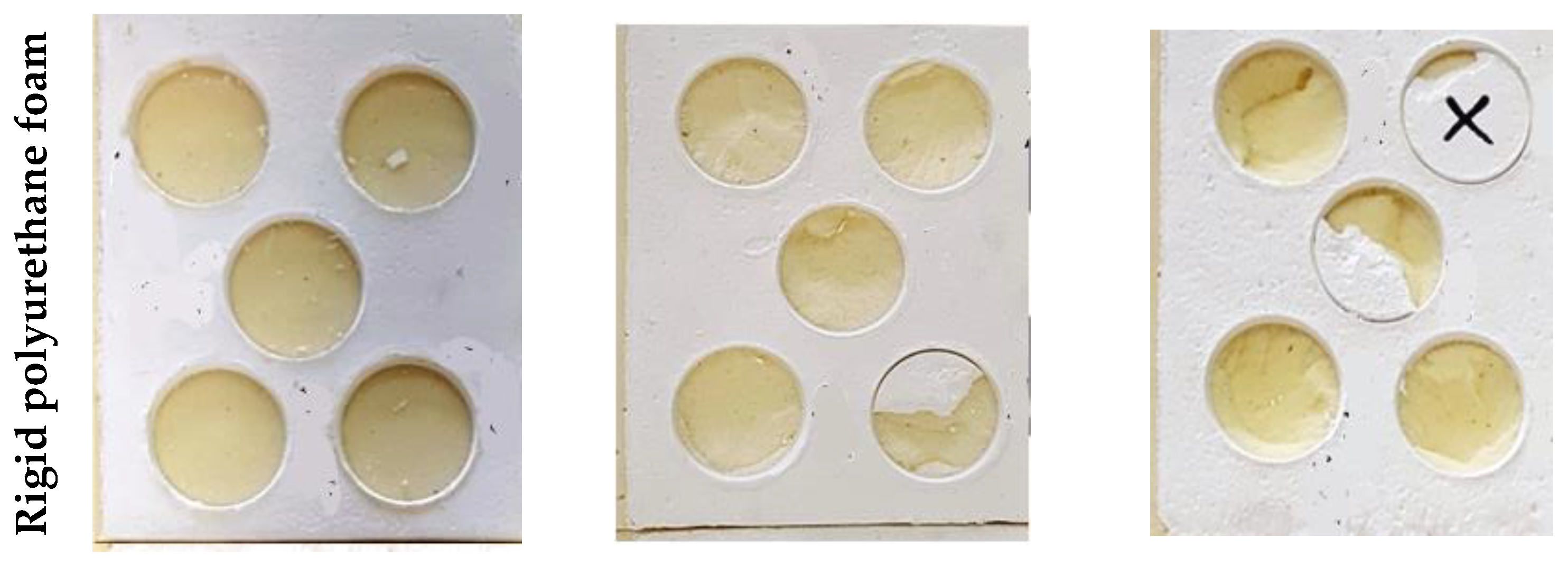
| Paste Type | |||
|---|---|---|---|
| RC-B | RC-A | RC-S | |
| apparent density [g/cm3] | 0.50–0.55 | 0.50–0.55 | 0.65–0.70 |
| pH | 9 | 9 | 9 |
| dispersion concentration [%] | <25 | <25 | <25 |
| the content of light fillers [%] | <28 | <28 | <20 |
| consistency | paste | paste | paste |
| Coating Sample | TOS, °C | T5, °C | T10, °C | T15, °C | T20, °C | Tmax, °C | Mass Residue at 750 °C, % |
|---|---|---|---|---|---|---|---|
| RC-B in N2 | 250 | 322 | 363 | 373 | 381 | 280/374 | 68.6 |
| RC-B in air | 225 | 269 | 293 | 319 | 339 | 283/335 | 70.0 |
| RC-S in N2 | 215 | 270 | 286 | 335 | 370 | 278/376 | 69.4 |
| RC-S in air | 215 | 262 | 277 | 292 | 325 | 279 | 70.0 |
| RC-A in N2 | 255 | 301 | 363 | 376 | 386 | 292/382 | 68.8 |
| RC-A in air | 220 | 280 | 301 | 321 | 339 | 286/337 | 70.3 |
| Thermo-Reflecting Coating Type | |||
|---|---|---|---|
| RC-B | RC-S | RC-A | |
| Tg, °C | 97.5 | Not detected | 161.1 |
| Thermo-Reflecting Coating Type | Relative Expansion, % at −160 °C | CTE, 10−6/°C at −160 °C |
|---|---|---|
| RC-B | −0.455 ± 0.008 | 25.1 ± 0.4 |
| RC-S | −0.383 ± 0.013 | 21.3 ± 0.7 |
| RC-A | −0.441 ± 0.007 | 24.5 ± 0.5 |
| Polyurethane foam | −1.446 ± 0.024 | 80.2 ± 1.5 |
| Apparent Density of Coating [kg/m3] | Water Absorption [v/v %] | OI, % | Water Vapor Diffusion Resistance Factor µ | Dimensional Stability of Coatings, % | |
|---|---|---|---|---|---|
| RC-B | 288.0 | 21.3 | 22.7 | 217 | <1 |
| RC-A | 277.8 | 21.9 | 23.3 | 126 | <1 |
| RC-S | 386.9 | 22.6 | 40.9 | 148 | <1 |
Publisher’s Note: MDPI stays neutral with regard to jurisdictional claims in published maps and institutional affiliations. |
© 2022 by the authors. Licensee MDPI, Basel, Switzerland. This article is an open access article distributed under the terms and conditions of the Creative Commons Attribution (CC BY) license (https://creativecommons.org/licenses/by/4.0/).
Share and Cite
Malewska, E.; Prociak, A.; Vevere, L.; Vanags, E.; Zemła, M.; Uram, K.; Kirpluks, M.; Cabulis, U.; Bryk, M. New Thermo-Reflective Coatings for Applications as a Layer of Heat Insulating Materials. Materials 2022, 15, 5642. https://doi.org/10.3390/ma15165642
Malewska E, Prociak A, Vevere L, Vanags E, Zemła M, Uram K, Kirpluks M, Cabulis U, Bryk M. New Thermo-Reflective Coatings for Applications as a Layer of Heat Insulating Materials. Materials. 2022; 15(16):5642. https://doi.org/10.3390/ma15165642
Chicago/Turabian StyleMalewska, Elżbieta, Aleksander Prociak, Laima Vevere, Edgars Vanags, Marcin Zemła, Katarzyna Uram, Mikelis Kirpluks, Ugis Cabulis, and Mirosław Bryk. 2022. "New Thermo-Reflective Coatings for Applications as a Layer of Heat Insulating Materials" Materials 15, no. 16: 5642. https://doi.org/10.3390/ma15165642
APA StyleMalewska, E., Prociak, A., Vevere, L., Vanags, E., Zemła, M., Uram, K., Kirpluks, M., Cabulis, U., & Bryk, M. (2022). New Thermo-Reflective Coatings for Applications as a Layer of Heat Insulating Materials. Materials, 15(16), 5642. https://doi.org/10.3390/ma15165642








